Hateful Eight”: A Blizzard of Profanity and Brutality
I remember watching “The Hateful Eight” in the theater and almost getting a headache from Quentin Tarantino’s relentless barrage of profanity.
In the midst of a blizzard where temperatures plummeted to thirty degrees below zero, the wooden doors of the stagecoach stop slammed violently in the wind. Eight gun-toting miscreants emerged, each with a disingenuous smile. This wasn’t just a Western; it was as if Tarantino had splashed whiskey on the film reel and then sprinkled it with chili powder, making your eyes water and your nose run, yet you couldn’t bear to blink.
A Blizzard Stagecoach Stop: A Human Arena Colder Than a Gun Barrel
The story begins like a Bloody Mary mixed wrong: “The Hangman” John Ruth (Kurt Russell) is escorting the female fugitive Daisy (Jennifer Jason Leigh) through a blizzard, picking up Marquis (Samuel L. Jackson), who claims to be a “cowboy,” along the way.
Four oddballs are already sitting inside the stagecoach stop: a Southern Major in a top hat, a “Mexican” selling medicine, a cowboy with a scarred face, and an old Black man huddled in the corner by the fire.
Once the wooden door closes, the breath of eight people condenses into white mist in the cold air, and everyone’s hand hovers three centimeters from their holster. That distance is enough for trust to shatter into ice.
Tarantino understands the “chemistry of enclosed spaces” all too well. The stagecoach stop’s drafty wooden walls, the crackling stove, and the wet socks hanging on the rope all become magnifying glasses for human nature.
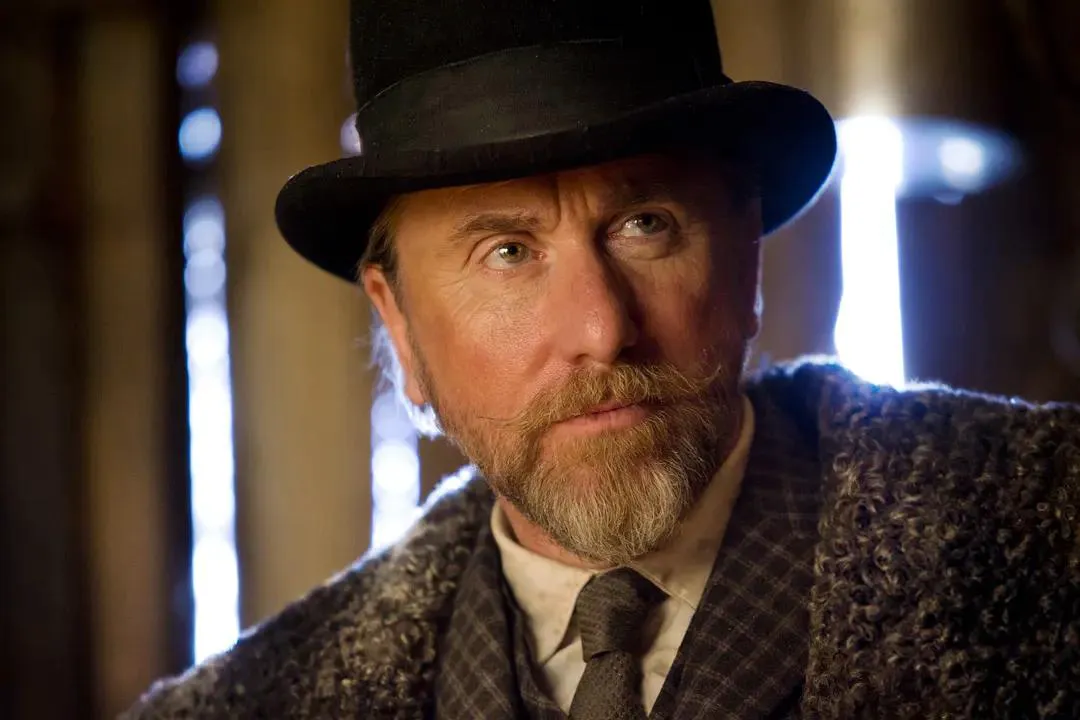
Daisy gnaws on raw meat while humming folk songs, dried blood embedded under her fingernails. Marquis polishes his rifle while discussing the Civil War, his eyes flashing with gunpowder as he scans each Southerner. Even when handing over a cup of coffee, you have to make sure the other person doesn’t have a knife hidden in their cuff.
The most incredible thing is the frozen corpse – the stagecoach stop owner, throat slit, still posed as if pouring coffee, reminding everyone that death is quieter than a blizzard here.
Every Villain Has a Barb-Wire Tongue; Profanity Is More Deadly Than Bullets
Tarantino’s dialogue is like a serrated knife, sparking as it cuts into the face of civilization.
Samuel L. Jackson, as Marquis, opens fire with a barrage of words: “If you ever dare use the word ‘nigger’ again, I’ll nail your tongue to the door and let the crows peck at it!”
On the surface, he’s a bounty hunter, but in reality, he carries a copy of the Emancipation Proclamation, and every word he speaks stabs at the spine of the South.
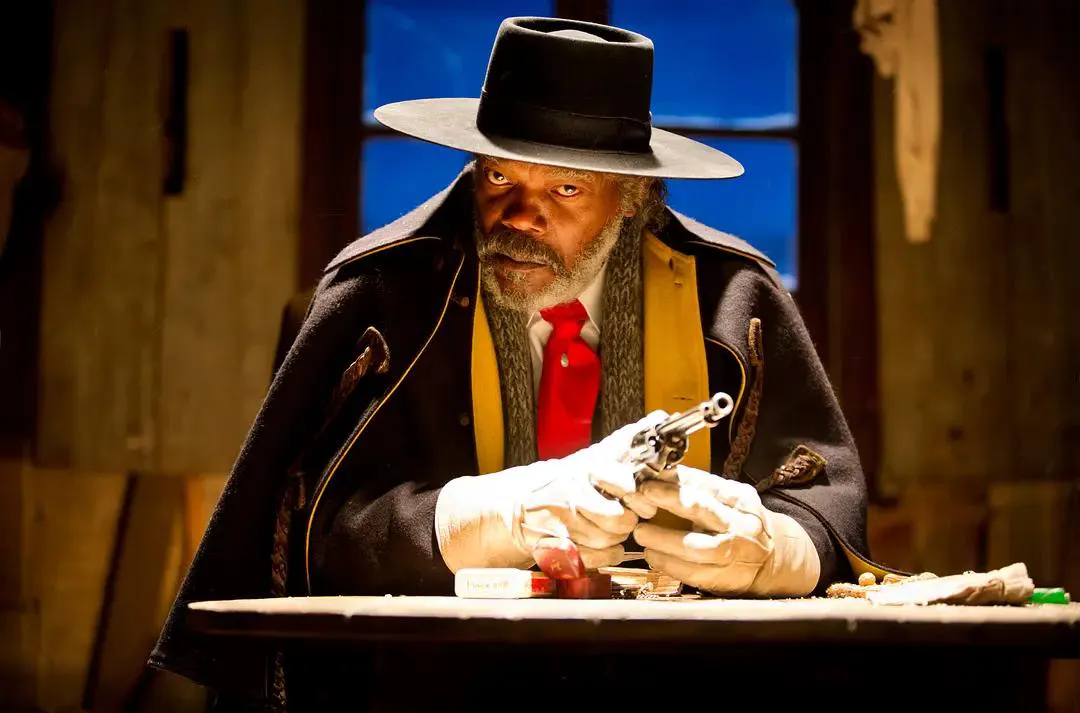
Jennifer Jason Leigh’s Daisy is even crazier. Beaten and bloodied, she still laughs, humming “Aria Under the Gallows” through her gapped teeth, a sense of “I should have died in a ditch long ago” recklessness.
The most interesting thing is the characters’ “identity reversals.”
John Ruth, who seems righteous, is actually a ruthless man who cuts off the heads of fugitives and puts them in boxes. When the “Mexican” selling medicine pulls out a Confederate flag, you realize he’s better at lying than the fugitives. Even the only “good guy” in the stagecoach stop, the old Black man Bob, is eventually revealed to be a masked killer.
Tarantino uses dialogue as bait, letting the audience guess who the wolf is, only to discover that everyone is a wolf in human skin. The only difference is that some wolves are smoking cigars, while others are hiding daggers.
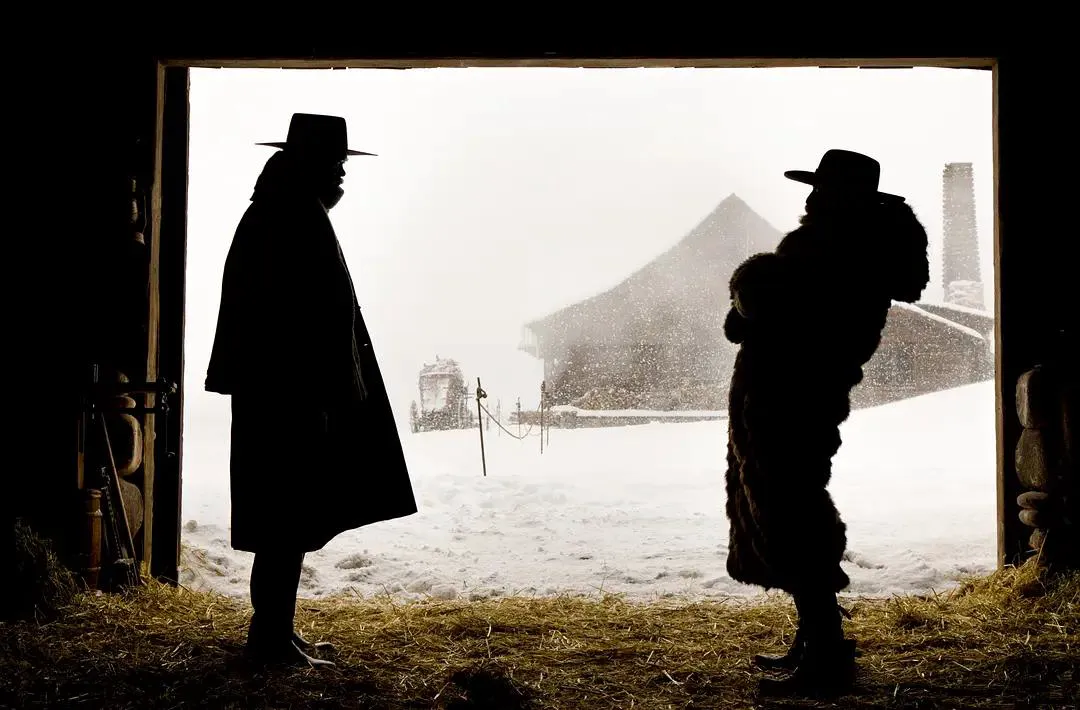
A Blood-Splattered Intermission: Tarantino Turns Violence into Black Comedy
The first half’s talkative confrontation is all to build up to the second half’s bloodbath.
When Marquis discovers that the coffee has been poisoned, when Daisy’s lover suddenly bursts out of the cellar, the stagecoach stop instantly turns into a slaughterhouse: rifles shatter windows, axes split heads, and even the frozen corpse is dragged down to be used as a shield.
The most absurd thing is when Daisy bites off her opponent’s ear and laughs with blood in her mouth: “Now you’re missing something, just like me.”
Tarantino’s aesthetic of violence is never meant to scare people, but to make the audience laugh in shock.
For example, Marquis uses a bounty hunter’s warrant as a bandage to stop the bleeding, and John Ruth is still cursing before he dies, blood flowing from the corner of his mouth like he’s applying red lipstick.
This magic of “laughing at the bloodshed” turns “The Hateful Eight” into a bullet-riddled carnival. You know you shouldn’t laugh, but watching Daisy’s crooked face still singing out of tune makes you want to slap your thigh.
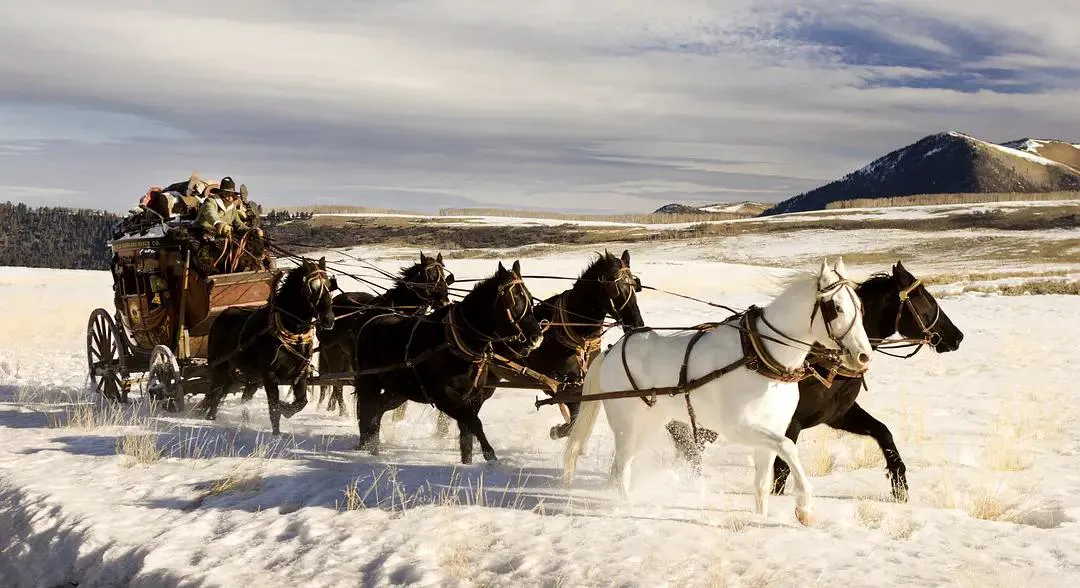
When Race, Politics, and Lies Ferment in the Ashes, Who Is the Real “Hateful”?
The film’s sharpest knife is hidden in the conversation between Marquis and the Southern Major. When the two talk about the Civil War, the Major says, “We just lost to the North’s industry,” and Marquis immediately retorts, “No, you lost to humanity.”
As a former Union soldier, he carries Lincoln’s autograph, but is subtly discriminated against by every Southerner in the stagecoach stop. This historically inherited rift is more difficult to dissolve than the blizzard.
And Daisy’s fall as a “Southern lady” is a brilliant satire of the old order: the crazier she is, the more she reveals the hypocrisy in the bones of those sanctimonious Southern gentlemen.
Tarantino uses “villains” as mirrors, reflecting the prejudices in everyone’s hearts.
The Black man Marquis understands the law better than any white man, the Southern Major wears medals but drinks urine to survive, and even the audience unconsciously takes sides. You think you’re waiting for justice to arrive, but you find that justice has long been frozen in the snow outside the door, and no one wants to pick it up.
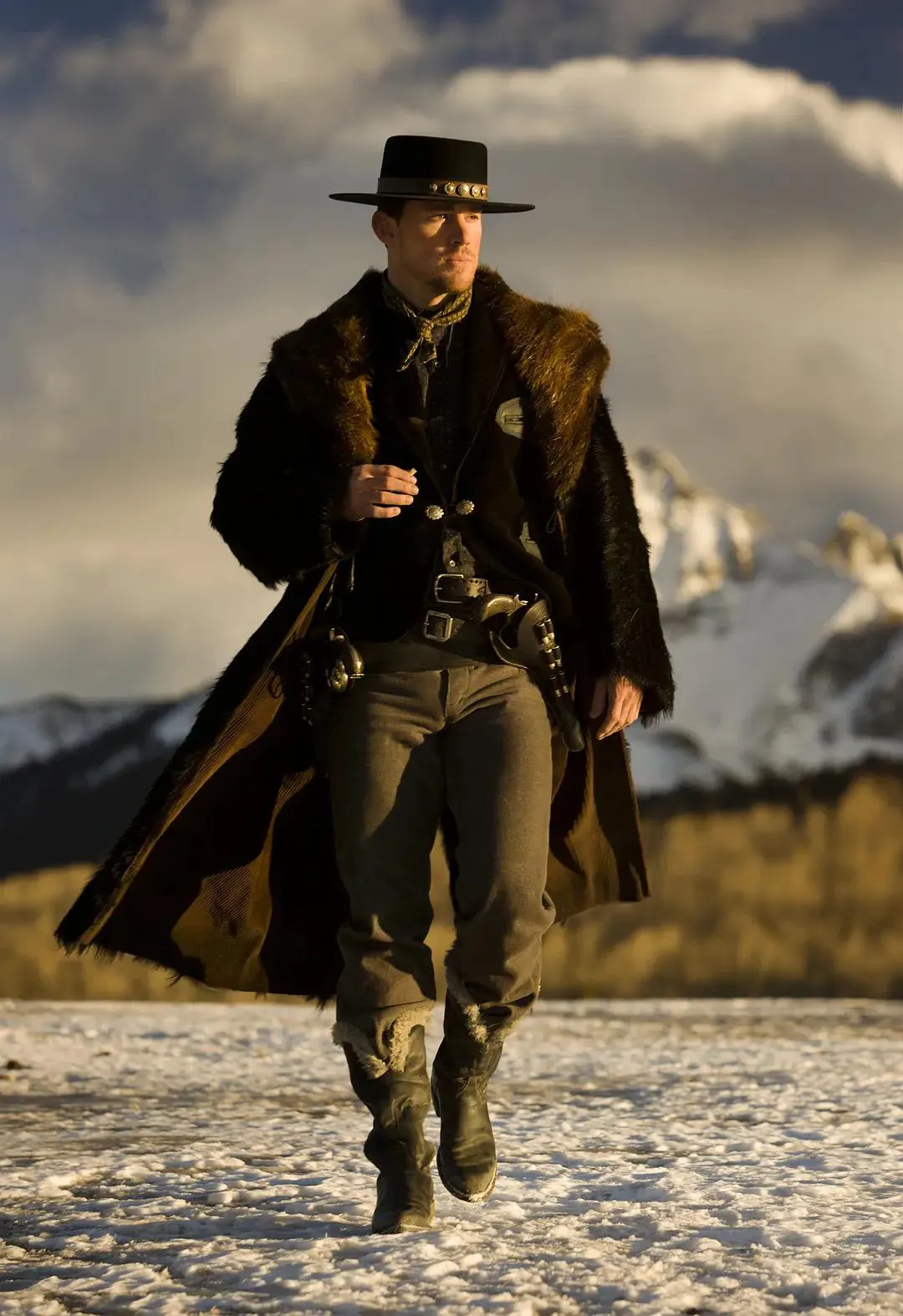
Tarantino’s Western Fantasy: Tearing Up Decency, Letting the Bastards Run Naked in the Blizzard
Some say “The Hateful Eight” is too long, with the first hour spent chatting, but that’s Tarantino’s cunning: he uses talkativeness to lull you into a false sense of security, uses details to pave traps, and when you fall into his narrative maze, you realize that every cigarette butt and every curse word is foreshadowing.
Like his signature chapter structure, the suddenly inserted “intermission” subtitle is actually an opportunity for the audience to catch their breath. Otherwise, who could stand listening to them talk about the origin of coffee beans for half an hour before eight people stab each other?
The most Tarantino thing about this film is that he doesn’t care if you like it or not.
He lets the villains curse and do bad things, but he fills everyone with stories: Why did Daisy kill everyone in the stagecoach stop? Why is Marquis’s bounty warrant have his own photo on it? These mysteries are like the blizzard outside the stagecoach stop, seemingly chaotic, but every snowflake has a trajectory.
And the bloody handprint that finally freezes on the bounty warrant seems to be saying: In this Western wasteland, no one can leave cleanly, including Tarantino himself, who is holding the camera.
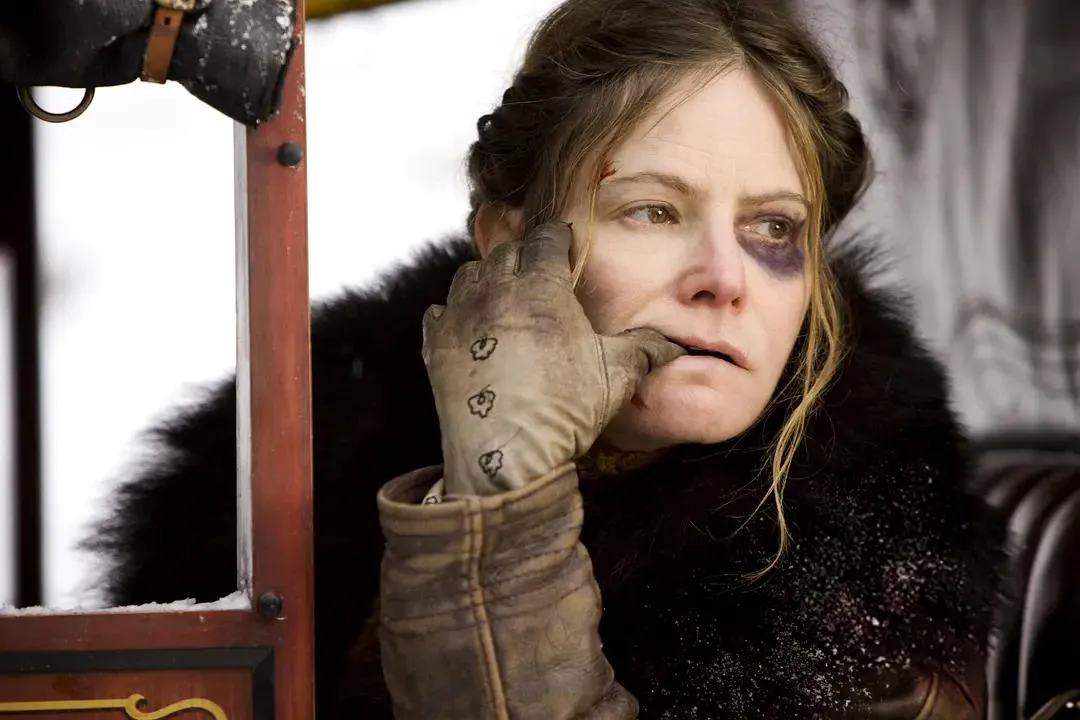
Looking at “The Hateful Eight” again, I finally understand Tarantino’s intention: he’s not making a Western, but a “no man’s land” of human nature.
Here, the law is a piece of paper that will be blown away by the wind and snow, morality is a piece of charcoal that is about to burn out in the stove, and the only thing that is real is the greed, fear, and occasional glimmer of pity in everyone’s eyes. Just like Marquis finally let go of the person who shouldn’t have died, but pulled the trigger as he turned around.
Tarantino uses this film to tell us: The so-called “villains” are just ordinary people who have been stripped of their disguises by life.
They tear each other apart in the blizzard, but they also miss the whiskey from their hometown before they die; they curse a lot, but they are more real than any sanctimonious gentleman.
And that never-ending blizzard is both the cruelty of the West and a metaphor for human nature. In the face of survival, we are all villains with guns, the only difference is that some people choose to pull the trigger, while others choose to bury the gun in the snow.
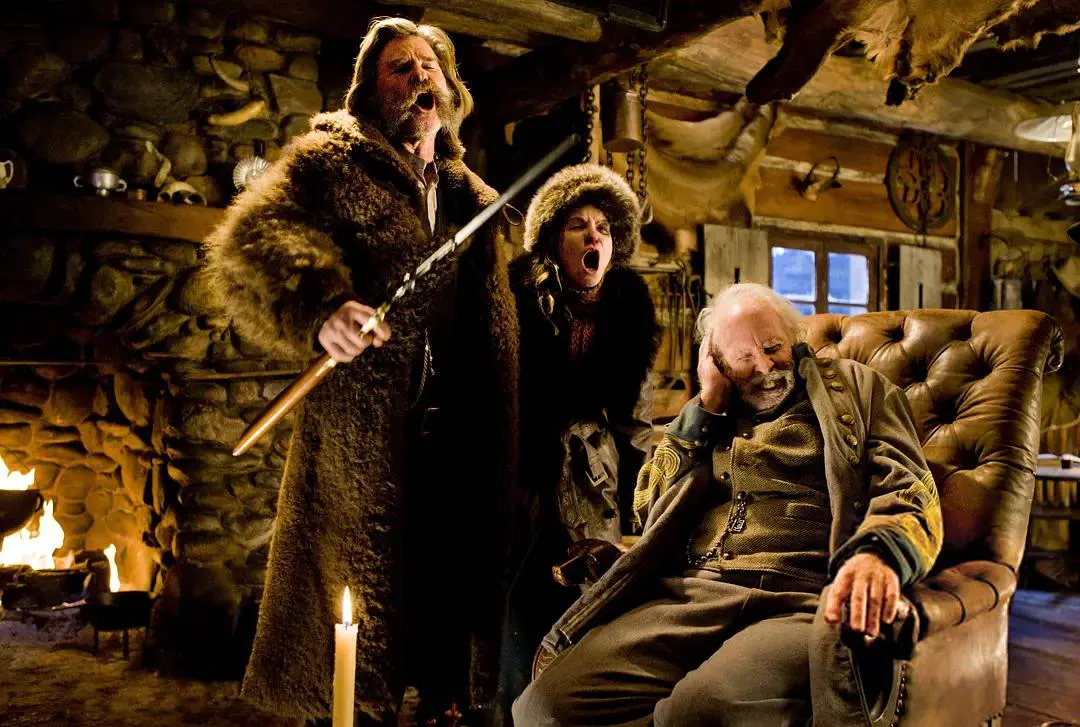
Next time someone says Tarantino is violent, I’ll throw the poster of “The Hateful Eight” at them: look at these bastards running naked in the blizzard, they are more like people than any glorious hero - scarred, with secrets, ready to give the world a shot at any time, but at some moment, let you see the little warmth in their hearts that hasn’t been frozen.
This is Tarantino’s charm, and it’s also why “The Hateful Eight” is unforgettable: it tears up all disguises, making human nature honest and bloody in the blizzard.